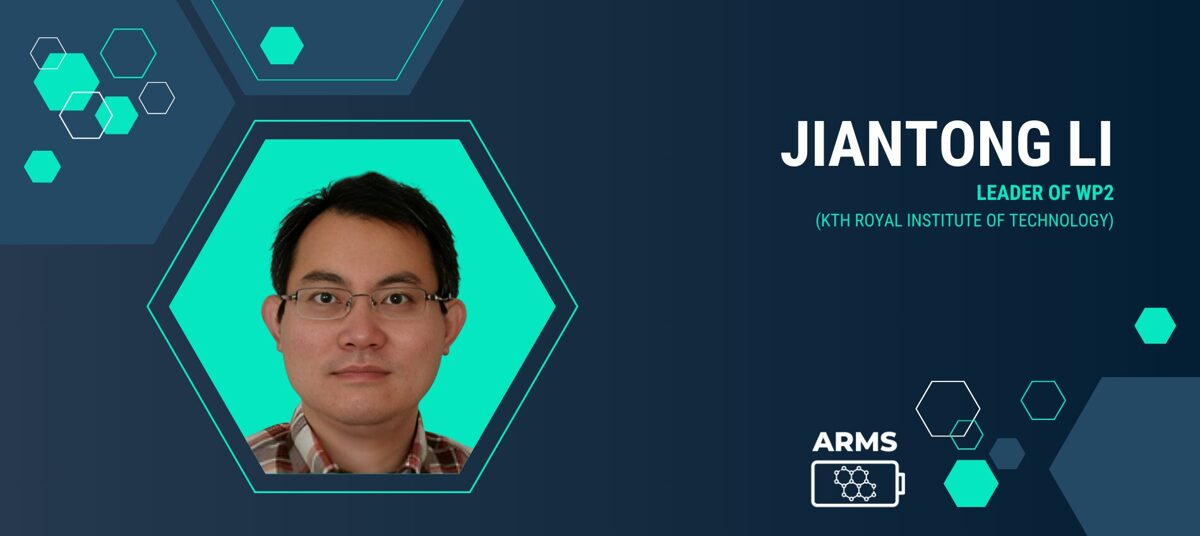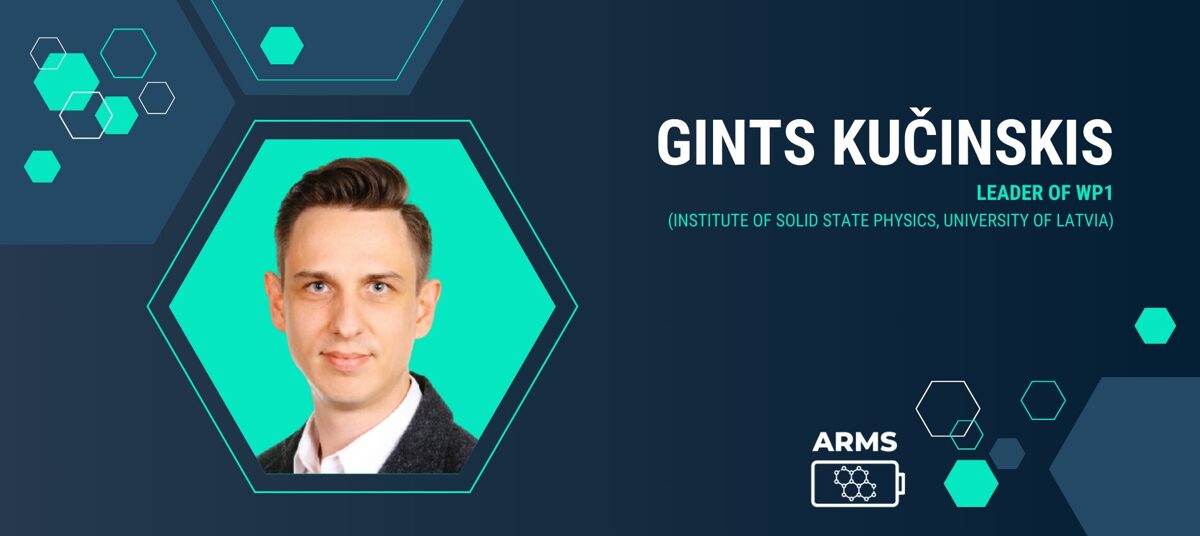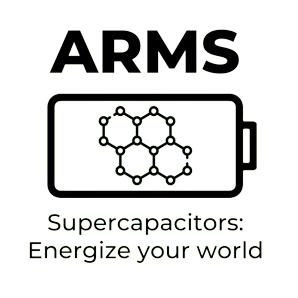WP 2 leader Jiantong Li, KTH Royal Institute of Technology

Jiantog Li received his PhD degree from KTH Royal Institute of Technology (Sweden) in 2010. He is now an Associate Professor in Printed Electronics at KTH, Chair of the IEEE Electronic Packaging Society Nordic Chapter, and Editorial Board Member of The Innovation-Energy. Jiantong Li is also a Board Member of the Nordic Microelectronics Packaging Conference and Exhibition (NordPac). His research interest includes inkjet printing and 3D printing of 2D materials and conducting polymers for scalable fabrication of electronics, energy harvesting, and energy storage applications, with a focus on paper substrates to enhance eco-friendliness and sustainability. His recent efforts are also extended to the development of versatile graphene inks for industry applications, including heat conduction, antibacterial coatings, 3D RF components, and ocean wave energy harvesting. Assoc. Prof. Li's expertise and research interests are well in line with the key objectives of ARMS, which are to develop graphene-enhanced flexible supercapacitors and structural supercapacitors.
Can you describe what your WP does in the ARMS project?
In WP2, we are combining the bio-based carbon materials synthesized in WP1 with graphene to develop versatile processes to fabricate electrodes with enhanced mechanical flexibility for flexible supercapacitors and increased capacitance for structural supercapacitors. We will also conduct systematic tests to identify the optimal electrode materials and fabrication processes that match the atomic layer deposition process and eco-friendly electrolytes for ARMS to develop advanced supercapacitors with significantly improved performance. In total, 7 partners are involved in WP2. KTH, TAU, IC, ISSP, and CID fabricate flexible supercapacitor electrodes through different processes, including both lab-scale and industrial R2R processes, aiming to deliver the optimal electrode fabrication process as the key outcome of WP2. For structural supercapacitors, AIMEN prepares various carbon fibre substrates, while KTH and CUT develop different methods to coat/grow graphene or graphene-enhanced carbon materials to significantly increase their capacitance. ISSP, KTH, and CUT will conduct systematic electrochemical tests and a mechanism study to identify the optimal electrode materials and fabrication processes.
What personal and organizational expectations do you have from the ARMS project?
Personally, I am very pleased to get the chance to work with various ARMS partners located throughout all the positions in the value chain. It is very exciting to see how graphene is transferred from materials to devices and to practical applications, and how graphene-enhanced supercapacitors evolve from lab-scale fabrication to industrial manufacturing.
From the perspective of KTH, I hope the key techniques in my group, including graphene-based ink formulation, printing, coating, and micro-supercapacitor fabrication, can be well integrated into ARMS to make contributions and meanwhile well developed during the course to address various critical challenges together with ARMS partners to substantially improve supercapacitor performance and scale up the fabricating processes.
How do you envision the integration of environmentally friendly materials in the fabrication of supercapacitor electrodes impacting everyday consumers?
Our ARMS supercapacitors are mainly based on eco-friendly materials. At the end of their lifetime, they can be directly thrown away into normal trash with no need for recycling. This will provide great convenience for everyday consumers and mitigate the present environmental impact of the batteries.
What challenges do you face in scaling up the production of graphene-enhanced electrodes, and how do these challenges affect the future of energy storage technologies?
In my opinion, the most critical challenge is the lack of a large-scale, cost-effective fabrication technique for high-quality graphene. It may increase the production cost of future energy storage technologies.
In what ways do you think the advancements in supercapacitor technology could revolutionize energy storage in various sectors, such as transportation or consumer electronics?
Our sustainable supercapacitors with energy density comparable to batteries and still high power density comparable to the normal supercapacitors will offer new opportunities to revolutionize relevant sectors. For energy storage in transportation, our ARMS supercapacitors could significantly shorten the charging time and hence increase the public adoption of electric vehicles. In addition, the structure of supercapacitors could integrate energy storage with vehicle architecture to save space and weight for higher energy and resource efficiency. For consumer electronics, the ARMS supercapacitors are mainly based on carbon materials. They are expected to have good biocompatibility and a significantly reduced environmental impact. These will mitigate the present global concern of battery waste from consumer electronics.
WP 1 leader Gints Kučinskis, Institute of Solid State Physics, University of Latvia

Dr. Gints Kučinskis, PhD, is a leading researcher and the head of the Energy Materials Laboratory at the Institute of Solid State Physics, University of Latvia (ISSP UL). He has established one of the largest battery materials research groups in the country, showcasing his deep expertise and commitment to the field. Gints' interest in physics was ignited by an enthusiastic teacher in school, making it a natural choice for him to study physics at the University of Latvia.
With over five years of experience in battery materials research at institutes in Germany, Dr. Kučinskis focuses on lithium and sodium-ion battery materials and materials for supercapacitors. His work explores environmentally friendly alternatives and investigates the aging processes of these materials.
Driven by a desire to contribute to society and innovate new technologies, Gints emphasizes the importance of patience, perseverance, and curiosity in scientific research. In his spare time, he enjoys outdoor activities and traveling.
Why did ISSP UL join the ARMS project consortium? What potential does it bring to the project?
The Institute of Solid State Physics, University of Latvia (ISSP UL) joined the ARMS project consortium to leverage its expertise in materials science, particularly in developing advanced energy storage solutions. ISSP UL contributes to the project through its Energy Materials Laboratory, which focuses on lithium and sodium batteries and supercapacitors.
In the AMRS project, the ISSP UL leads Work Package 1 (WP1 – Graphene containing biobased carbon). Additionally, the institute oversees communication and dissemination activities under WP7, ensuring effective sharing of project developments.
Our advanced facilities, state-of-the-art equipment for synthesizing and characterizing materials, and the interdisciplinary team drive innovative research, contributing to the project's goal of developing high-performance, eco-friendly supercapacitors. Connections with other academic, industrial, and research entities help to enhance the project’s outreach and impact further.
What do you do in WP1, and why does it matter to everyday consumers?
In WP1, we work closely with other project ARMS partners – Latvian State Institute of Wood Chemistry, InnoCell, and KTH Royal Institute of Technology. Together, we are developing graphene-containing carbon materials from plant-based sources for supercapacitor electrodes. The objectives include creating cost-effective, nitrogen/phosphorous-doped carbon nanomaterials, characterizing their properties, and scaling up production to support the fabrication of high-performance supercapacitors. ISSP performs structural and electrochemical characterization, enabling iterative optimization of the materials synthesis for improved electrochemical performance of the supercapacitors.
The innovative methods in WP1 aim to develop sustainable, bio-based carbon materials free from toxic substances and heavy metals. These advancements are significant for everyday consumers as they enhance safety by reducing exposure to hazardous materials, particularly in electronics and toys. They also have a positive environmental impact by utilizing renewable resources and minimizing harmful waste, meeting the growing demand for eco-friendly products. Additionally, these methods improve performance by enhancing energy storage capabilities without compromising safety or environmental standards, leading to better-performing electronic devices like longer-lasting batteries. These innovations promise safer, more sustainable products that align with consumer expectations for performance and environmental responsibility.
How does collaboration across different teams enhance the work being done in WP1, and what unique perspectives do these collaborations bring?
Working together in WP1 helps create better graphene-based materials for supercapacitors. Different partners, like LSIWC, ISSP, and IC, bring their unique skills, from making and testing raw materials to turning them into new supercapacitor technologies. For instance, LSIWC specializes in developing high-quality activated carbons from biomass, while ISSP provides advanced characterization techniques for rapid feedback on material performance. This teamwork ensures that the materials meet the high standards needed for supercapacitors.
Additionally, this collaboration allows teams to explore new ways to make and improve materials. For instance, experts from KTH and AIMEN work on making electrodes with fewer inactive binders, which boosts energy density. Combining knowledge from materials science, chemical engineering, and industrial design speeds up innovation. It makes the materials more scalable and eco-friendly, putting the ARMS project at the forefront of green energy storage solutions.
How are sustainability and environmental impact considered in developing new materials within WP1, and why is this important for the future?
Developing new materials in Work Package 1 (WP1) is deeply rooted in sustainability and reducing environmental impacts. We're using biomass-based materials, such as leaf-derived graphene and black liquor from the paper-making process, which come from renewable resources and help reduce waste. Our manufacturing processes are designed to be eco-friendly, avoiding toxic substances to protect both the environment and human health.
Focusing on sustainable materials is crucial for environmental protection, promoting a circular economy, and ensuring health and safety. By creating less harmful materials, the project helps combat pollution and resource depletion, supports recycling and waste reduction, and enhances safety for consumers and workers. This approach is essential for achieving a healthier, more sustainable future.
What personal and organizational expectations do you have from the ARMS project?
The real strength of ARMS is the collaboration between 11 diverse partners, each bringing unique expertise. It’s an excellent opportunity to exchange knowledge, learn from others, and share what we know. Furthermore, well-managed projects like this don’t just drive innovation—they create lasting connections.
From an organizational perspective, I expect ARMS to push the boundaries of carbon-based and ALD-processed supercapacitors, delivering real progress in energy storage. I am confident we will achieve meaningful results that can benefit both research and industry.
Personally, I am excited to see our work come to life in practical applications like flexible and structural supercapacitors for sensors and drones, and I am keenly following the results. More than anything, I hope the collaborations we have built here continue beyond the project, leading to even more exciting discoveries and innovations in the future.
What are some potential real-world applications for the materials being developed in WP1, and how might they impact energy storage?
The materials being developed in WP1 have a wide range of potential applications. They could power everyday items like remote controls, IoT sensors, and toys, and also be used in larger-scale applications like electric cars and energy grids. These applications can help balance energy use and reduce environmental impact.
These materials are essential for energy storage. The supercapacitors made from these eco-friendly materials can store much energy, similar to batteries, but without the harmful environmental effects. Using these green energy storage solutions helps create a cleaner environment and supports the move to renewable energy, making our energy systems more efficient and sustainable for the future.
WP 8 leader and ARMS project coordinator Matti Mäntysalo, Tampere University

Prof. Matti Mäntysalo is a full professor at the Laboratory for Future Electronics at Tampere University, Finland. He has published over 200 research papers, with more than 5600 citations (h-index 35), was awarded for the first inkjet printed GSM BB integration, and has given many scientific and technical talks, including keynotes. He has served as an external expert in IEEE, IEC, and the Organic Electronics Association. His research interests include printed electronics materials, fabrication processes, stretchable electronics, sensors, and the integration of printed electronics with silicon-based technology (hybrid systems). His research interests include printed and flexible electronics, deformable electronics, sensors, self-powered electronics, and system integration, especially the integration of printed and conventional electronics. His research vision is to achieve more sustainable electronics through material selection and low-temperature fabrication processes.
Could you explain the concept behind the ARMS project?
Supercapacitors have been widely accepted as an important type of electrochemical energy storage device due to their high power density, rapid charging time, and long cycle life. In contrast to batteries, which frequently contain toxic, corrosive and/or strategically problematic materials, supercapacitors can rely on eco-friendly materials. However, the energy density of most commercially available supercapacitors is significantly lower than batteries. ARMS is solving this by integrating materials and processes, including graphene-rich bio-based carbon materials and graphene-decorated carbon fibres, and developing scalable and cost-effective atomic layer deposition (ALD) manufacturing technology
As the project coordinator, could you explain the reason behind the ARMS project? What is the project’s origin story? How were the other consortium partners identified and selected?
This is a good question. At TAU, we have investigated printed flexible supercapacitors for several years, and many doctoral theses have been published. We made a strategic decision to focus on environmentally sustainable materials. These materials typically are not performing as well as some of their toxic or harmful counterparts. Therefore, we often brainstormed with different ideas to overcome these obstacles. We knew some of the partners from our previous EU collaboration and developed the idea with some of them. During the development, we recognized that we needed expertise from different domains, which led to this consortium.
What does your organization do in the ARMS project? What is your role in it?
My role in ARMS is to coordinate the project. In addition to coordination, TAU is responsible for a work package that researches and develops electrode decoration using ALD.
What are your expectations for the project from both your personal and organizational viewpoints?
I am enthusiastic about the project. It combines our expertise in supercapacitors and thin-film deposition. As a coordinator, I see that we have a talented and innovative consortium. The team members are genuinely interested and committed to the project. Therefore, it is easy to believe that our approach will dramatically improve supercapacitors' performance.
Could you outline the main innovations that the ARMS project will offer the world at the end of the project?
The project's main innovation is that we use 2D materials like graphene, which is used in supercapacitor electrodes, and decorate it with metal oxides using atomic layer deposition. First, in labs scale aiming to spatial ALD and roll-to-roll process. This will have a huge impact on energy storage. If and when, we are able to reach the energy density levels close to batteries, those can be replaced with more sustainable supercapacitors.
Can you foresee any potential future collaborations or expansions of the ARMS project beyond its current scope?
